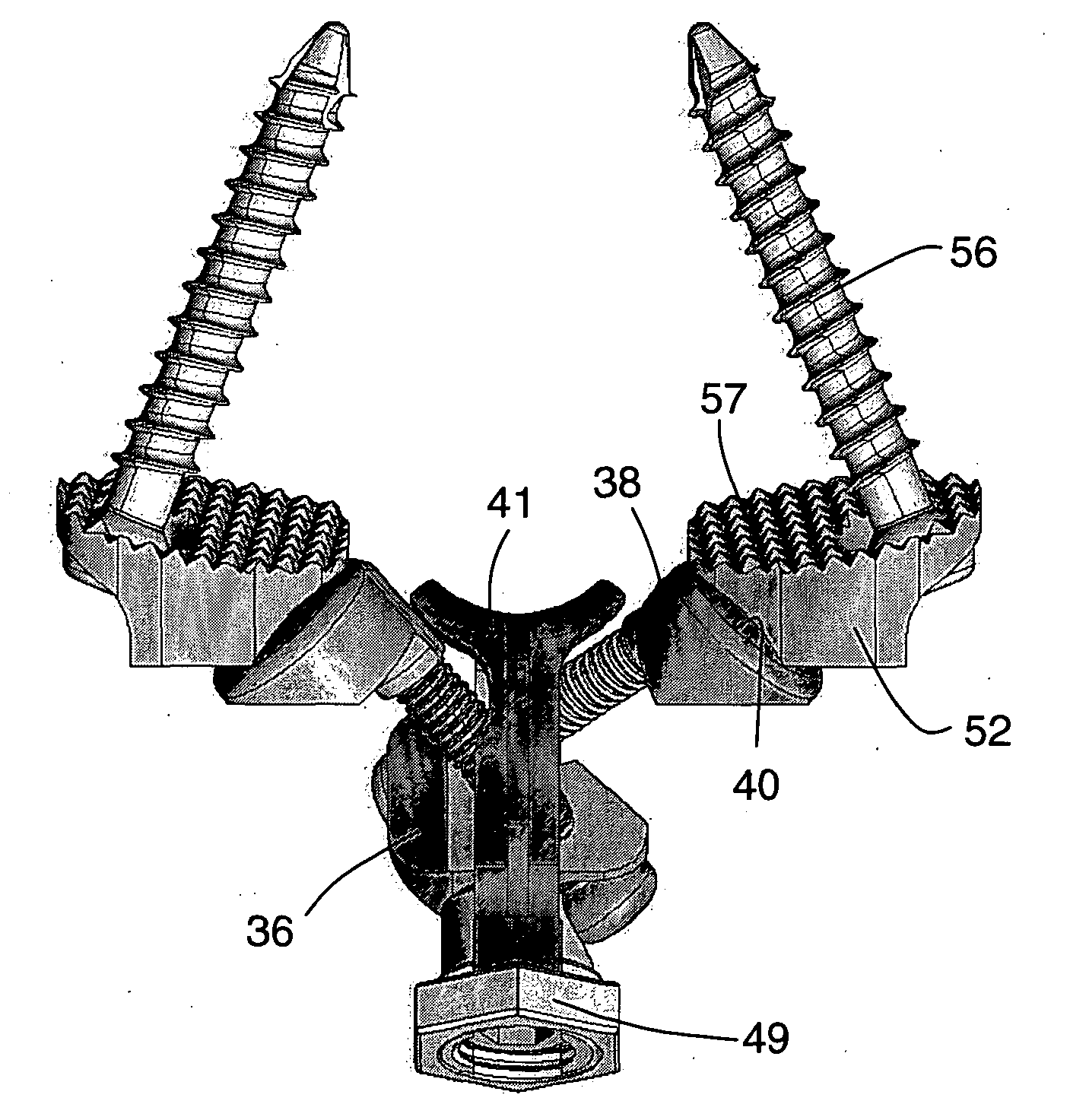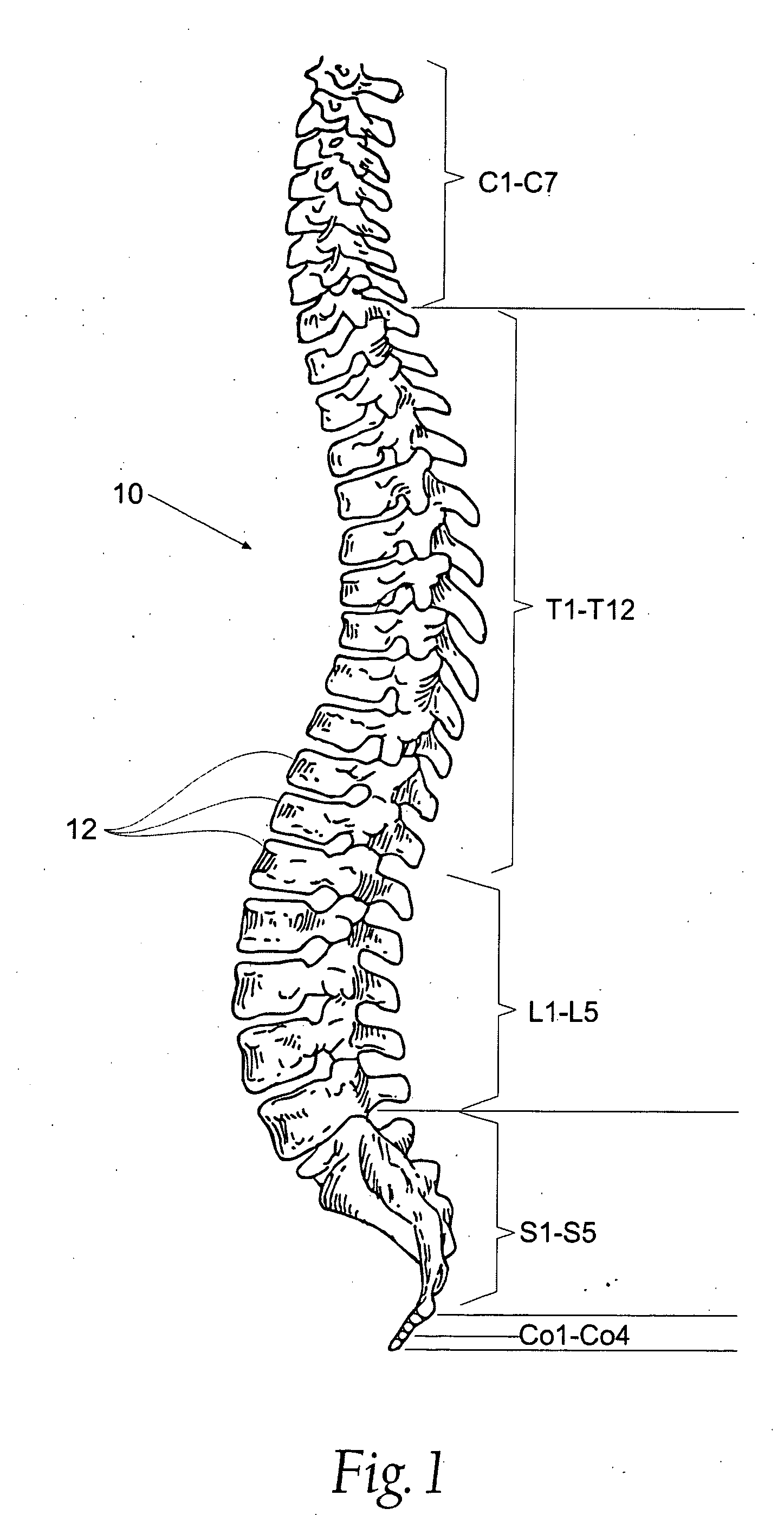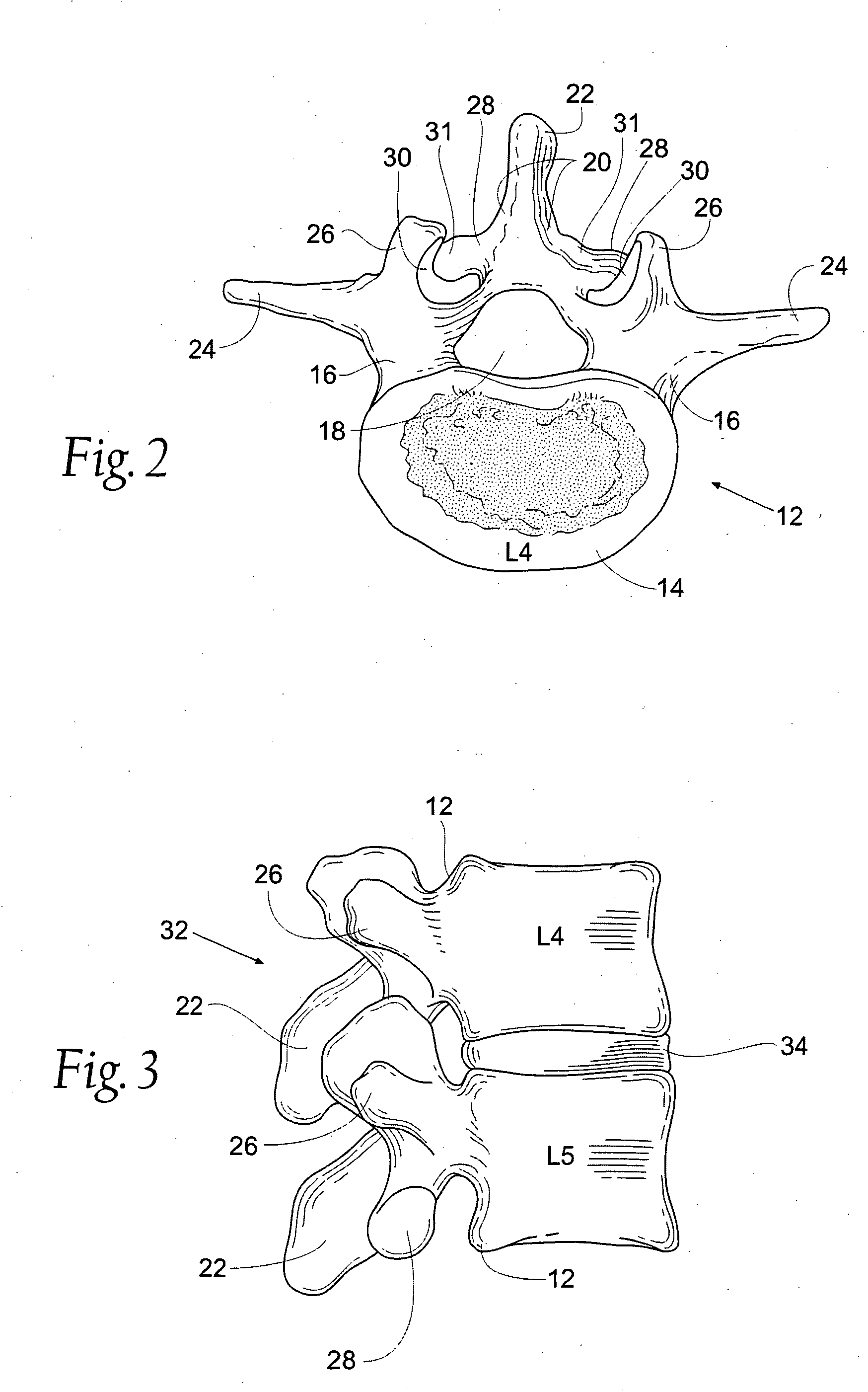Prostheses, tools and methods for replacement of natural facet joints with artificial facet joint surfaces
a technology of facet joint and artificial joint, which is applied in the field of prostheses for treating various types of spinal pathologies, can solve the problems of pain or discomfort, severe limitations on the functional ability and quality of life of people, and the vertebrae no longer articulated or properly aligned with each other, so as to relieve the source of nerve compression or impingement and lessen or alleviate spinal pain.
- Summary
- Abstract
- Description
- Claims
- Application Information
AI Technical Summary
Benefits of technology
Problems solved by technology
Method used
Image
Examples
Embodiment Construction
[0058] Although the disclosure hereof is detailed and exact to enable those skilled in the art to practice the invention, the physical embodiments herein disclosed merely exemplify the invention that may be embodied in other specific structure. While the preferred embodiment has been described, the details may be changed without departing from the invention, which is defined by the claims.
[0059]FIGS. 4-12 show artificial cephalad and caudal facet joint prostheses for replacing a natural facet joint according to one aspect of the invention. The cephalad prosthesis has a bearing element 38 with a bearing surface 40. In this embodiment, bearing surface 40 has a convex shape. Bearing element 38 and bearing surface 40 may be formed from biocompatible metals (such as cobalt chromium steel, surgical steels, titanium, titanium alloys, tantalum, tantalum alloys, aluminum, etc.), ceramics, polyethylene, biocompatible polymers, and other materials known in the prosthetic arts.
[0060] Dependin...
PUM
| Property | Measurement | Unit |
|---|---|---|
| angle | aaaaa | aaaaa |
| distance | aaaaa | aaaaa |
| relative movement | aaaaa | aaaaa |
Abstract
Description
Claims
Application Information
 Login to View More
Login to View More - R&D
- Intellectual Property
- Life Sciences
- Materials
- Tech Scout
- Unparalleled Data Quality
- Higher Quality Content
- 60% Fewer Hallucinations
Browse by: Latest US Patents, China's latest patents, Technical Efficacy Thesaurus, Application Domain, Technology Topic, Popular Technical Reports.
© 2025 PatSnap. All rights reserved.Legal|Privacy policy|Modern Slavery Act Transparency Statement|Sitemap|About US| Contact US: help@patsnap.com



